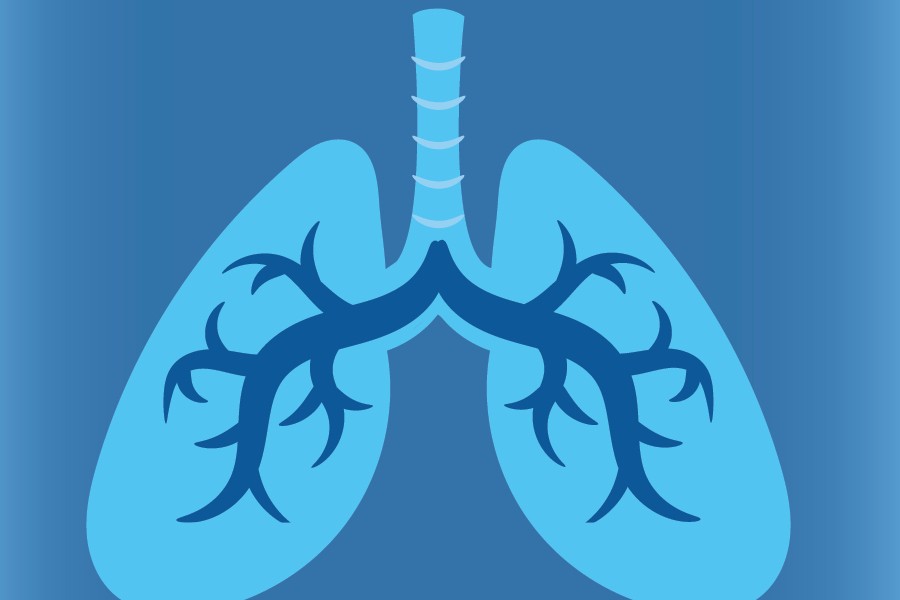News
Lung Cancer: Reducing Your Risk
November 06, 2023
Thanks to movies, TV shows, and extensive public awareness campaigns, lung cancer has long been a part of the public consciousness. Many Americans recognize that the disease is strongly linked to smoking, and that its symptoms include coughing, wheezing and persistent chest pain. This awareness is a good thing – the first step in fighting lung cancer is learning its risk factors and early warning signs.
Unfortunately, many facts about lung cancer are not as widely known. For instance, not every lung cancer victim is a smoker. And not all lung cancer patients will experience symptoms – at least, not until the disease has progressed. That is why it is important to understand your other risk factors, and to screen for cancer early, at the recommendation of your provider.
November is National Lung Cancer Awareness Month. Reduce your cancer risk through the following practices:
Quit Smoking
Tobacco products, such as cigarettes, cigars, and pipes, remain the number one risk factor for lung cancer. If you are a current smoker, quitting will drastically reduce your risk – however, it will not eliminate it entirely. Former smokers are still at higher risk than the general population and should consult their provider about the screenings and treatments they may need to stay healthy.
If you or someone you love is looking to quit smoking, you can find tips, articles, and support at www.smokefree.gov, or call 800.QUIT.NOW (800.784.8669) to get connected.
Know Your Risk Factors
Smoking is not your only risk factor: the CDC (Centers for Disease Control) estimates that 10-20% of lung cancer cases occur in people who have never smoked. If you are a non-smoker, you can reduce your risk by avoiding carcinogens such as asbestos, air pollution and secondhand smoke. Genetic factors, such as personal or family history of lung cancer, can also increase your cancer risk.
Recognize the Symptoms
Signs of lung cancer vary from person to person and may change depending on how far the disease has progressed. Most people will experience no symptoms early on. Symptoms may include:
- Coughing that gets worse or does not go away
- Chest pain
- Shortness of breath
- Wheezing
- Coughing of blood
- Constant feeling of being very tired
- Weight loss without a known cause
- Repeated instances of pneumonia
- Swollen or enlarged lymph nodes inside the chest area between the lungs
Some of these signs may also indicate conditions other than lung cancer. If you experience any of these symptoms, talk to your provider immediately.
Get Screened
Because the signs of lung cancer may take a while to appear, waiting for symptoms is not the best way to detect cancer. Between 2016 and 2020, half of all lung cancer cases were diagnosed when the disease had already spread to distant parts of the body. Once the disease has spread, treatment is much less effective.
Thankfully, modern screening technologies such as a low dose computed tomography (LDCT) scan can detect lung cancer before symptoms appear. A LDCT scan uses special x-ray equipment and advanced technology to help identify suspicious spots on the lungs that may be cancerous. It is a simple test and usually takes less than one minute to complete.
While the LDCT scan is highly effective, it does carry some risk – over-testing can be expensive and may lead to false positive results. The LDCT scan is recommended for patients who:
- Have a history of heavy smoking (1 pack per day for 20 years or 2 packs per day for 10 years) and
- Smoke now or have quit within the past 15 years and
- Are between 55 and 77 years old.
Talk with your provider about your risks and if a lung cancer screening is right for you. If you don’t have a primary care provider, call Spring Viewl Hospital at 270.692.3161 or visit the Find a Doctor tab at SpringViewHospital.com to get connected with one today. For more information on lung cancer risks, symptoms and prevention, visit www.cdc.gov/cancer/lung and www.cancer.org/cancer/lung-cancer.html.
